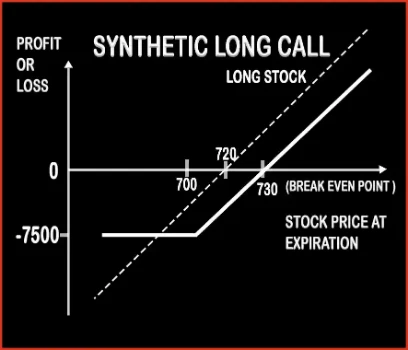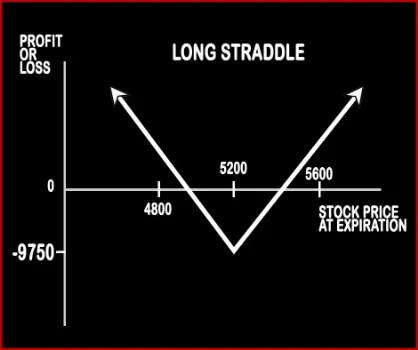Compare Strategies
| SYNTHETIC LONG CALL | LONG STRADDLE | |
|---|---|---|

|

|
|
| About Strategy |
Synthetic Long Call Option StrategyA trader is bullish in nature for short term, but also fearful about the downside risk associated with it. Here, a trader wants to hold an underlying asset either in physical form like in case of commodities or demat (electronic) form in case of stocks. But he is always exposed to downside risk and in order to mitigate his losses, |
Long Straddle Option StrategyStraddle is neither bullish nor bearish strategy; it is a market neutral strategy. Here a trader wishes to take advantage of the volatility in the market. This strategy involves buying of one Call option and one Put option of the same strike price, same expiry date and of the same underlying asset. Now a trader is bound to make profits once stock moves in either direc .. |
SYNTHETIC LONG CALL Vs LONG STRADDLE - Details
| SYNTHETIC LONG CALL | LONG STRADDLE | |
|---|---|---|
| Market View | Bullish | Neutral |
| Type (CE/PE) | CE (Call Option) | CE (Call Option) + PE (Put Option) |
| Number Of Positions | 2 | 2 |
| Strategy Level | Beginners | Beginners |
| Reward Profile | When Price of Underlying > Purchase Price of Underlying + Premium Paid | Unlimited |
| Risk Profile | Limited (Maximum loss happens when the price of instrument move above from the strike price of put) | Limited |
| Breakeven Point | Underlying Price + Put Premium | Lower Breakeven = Strike Price of Put - Net Premium, Upper breakeven = Strike Price of Call + Net Premium |
SYNTHETIC LONG CALL Vs LONG STRADDLE - When & How to use ?
| SYNTHETIC LONG CALL | LONG STRADDLE | |
|---|---|---|
| Market View | Bullish | Neutral |
| When to use? | A trader is bullish in nature for short term, but also fearful about the downside risk associated with it. | This options strategy is work well when and investor market view is bearish. The strategy minimizes your risk in the event of prime movements going against your expectations. |
| Action | Buy 1 ATM Put or OTM Put | Buy Call Option, Buy Put Option |
| Breakeven Point | Underlying Price + Put Premium | Lower Breakeven = Strike Price of Put - Net Premium, Upper breakeven = Strike Price of Call + Net Premium |
SYNTHETIC LONG CALL Vs LONG STRADDLE - Risk & Reward
| SYNTHETIC LONG CALL | LONG STRADDLE | |
|---|---|---|
| Maximum Profit Scenario | Current Price - Purchase Price - Premium Paid | Max profit is achieved when at one option is exercised. |
| Maximum Loss Scenario | Premium Paid | Maximum Loss = Net Premium Paid |
| Risk | Limited | Limited |
| Reward | Unlimited | Unlimited |
SYNTHETIC LONG CALL Vs LONG STRADDLE - Strategy Pros & Cons
| SYNTHETIC LONG CALL | LONG STRADDLE | |
|---|---|---|
| Similar Strategies | Protective Put, Long Call | Bear Put Spread |
| Disadvantage | •Chances of loss if the underlying goes down. •Incur losses if option is exercised. | • There should be continuous movement of the stock and options price for this strategy to be profitable. • Time decay hurts long option if the strike price, expiration date or underlying stock are badly chosen. |
| Advantages | •Limited risk, unlimited profit. •Protection to your long-term holdings. • Limited loss to the to the premium paid for Put option. | • Unlimited potential beyond the breakeven point in either direction . • Book your profit from highly volatile stocks without determining the direction. • Limited risk, more profit. |